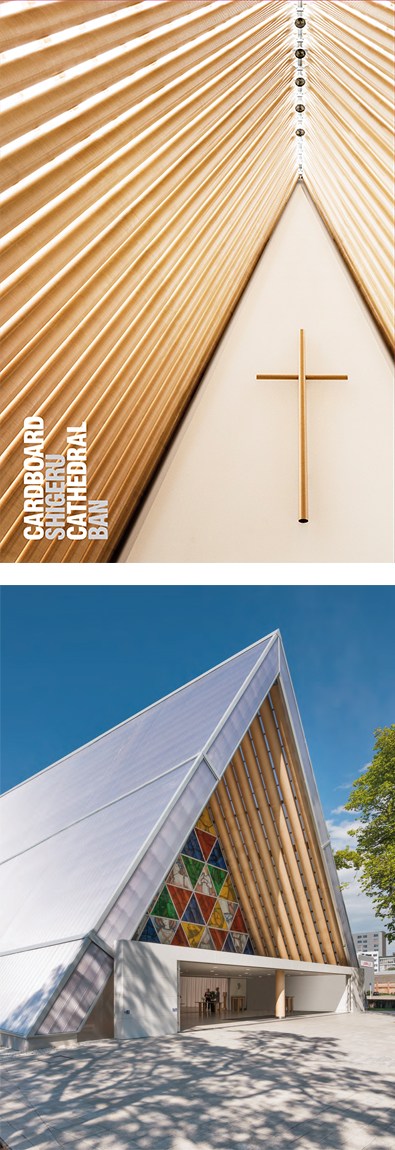Shigeru Ban, architect of Christchurch’s Transitional (‘Cardboard’) Cathedral, has won the Pritzker Prize. Ban is a world-class architect and expert in disaster-zone building. The new Cathedral is his largest post-disaster structure to date.
“The Pritzker Prize is the equivalent of the Nobel Prize for architecture, being awarded for lifetime contribution to the advancement of the art of architecture globally,” says Dr Andrew Barrie, professor at the University of Auckland’s School of Architecture & Planning and author of Shigeru Ban: Cardboard Cathedral (Auckland University Press).
“The Cardboard Cathedral now has the unique status as New Zealand's only building by a Pritzker-Prize-winning architect, cementing its position as among the most significant buildings in New Zealand’s architectural history.”
Built in Christchurch’s inner city, the Cardboard Cathedral stands in for the historic building devastated by the earthquakes of September 2010 and February 2011. Signalling the beginnings of renewal in the CBD, the Cathedral is the first new civic building completed since the quake and is built to last forever.
“Our book, Shigeru Ban: Cardboard Cathedral, captures the dramatic process of the design and construction of the Cathedral, and it will be great to share the story of this now even more significant building with the world,” Barrie says.
Shigeru Ban was born in Tokyo in 1957. He trained at the Southern California Institute of Architecture in Los Angeles and the Cooper Union in New York before establishing his own firm in Tokyo, which now has offices in Tokyo, Paris and New York. He has taught at Yokohama National University, Keio University and Harvard University.
Ban’s career now spans 30 years and has been characterized by both consistently innovative and adventurous design, and a concern for those who normally don't have access to such architecture – the dispossessed and traumatized victims of disasters.
“A temporary building that is loved by people – even one built with mere paper – can become permanent,” says Shigeru Ban.
“I sense that this monument in Christchurch will be loved and used by the citizens of New Zealand for a long time to come.”
Shigeru Ban: Cardboard Cathedral published in August 2014. In essays, building plans and specially commissioned photography, Shigeru Ban: Cardboard Cathedral tells the story of a remarkable feat. Originally conceived as a temporary building, its construction involved design challenges, structural innovations and community involvement; and the finished, now permanent structure seems set to become an enduring symbol of Christchurch’s revival.

